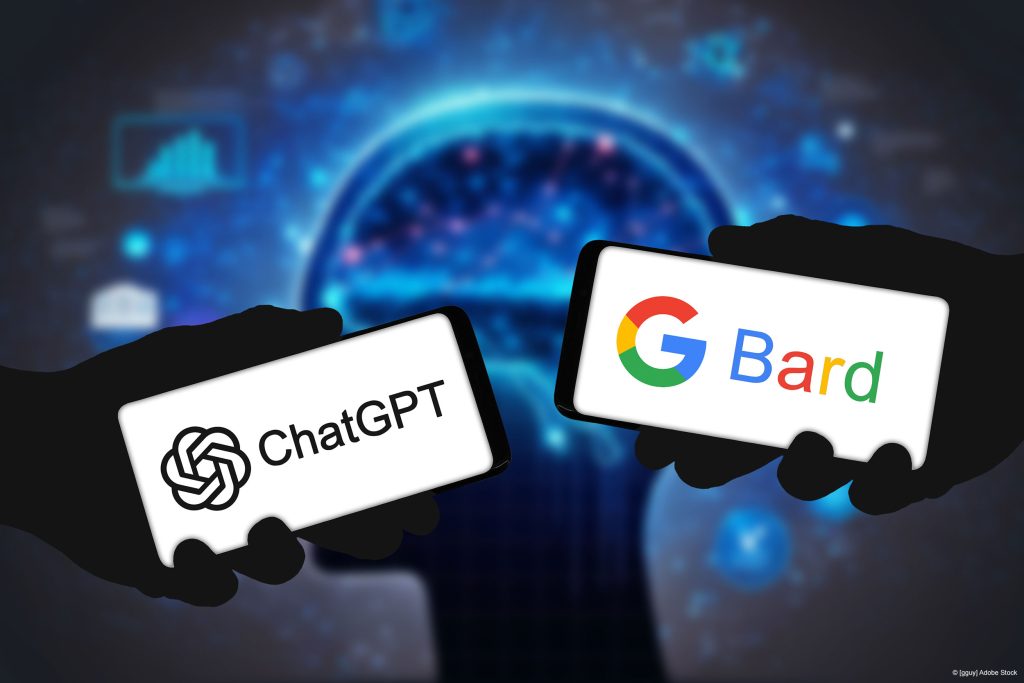It is clear that ChatGPT, the chatbot developed by OpenAI, has stirred the waters of the conversational Artificial Intelligence sector thanks to its expressive capabilities that go well beyond the canonical responses of other chatbots.

But the response from the big names in Silicon Valley, and from Google in particular, did not take long to arrive: in February this year, in fact, the CEO of Google and Alphabet Sundar Pichai introduced Bard, the chatbot based on LaMDA ( Language Model for Dialogue Applications ).
BARD: HOW IT WORKS
Google’s chatbot is still in the testing phase and its aim is to use information on the web to provide updated and realistic answers.
The Beta version, at the moment, is based on a simplified version of LaMDA as, by requiring drastically less computing power, it allows programmers to have more people use Bard at the same time and thus receive more feedback and suggestions.
The goal is to combine the breadth of global knowledge with the intelligence, power and creativity of great linguistic models, while ensuring a high level of quality, security and substantiation of information and answers, thus exceeding the limits that ChatGPT has today .
DIFFERENCES WITH CHATGPT

It is clear that, from an offering point of view, Bard is currently not very different from ChatGPT : like the OpenAI chatbot, in fact, it is capable of both answering specific questions and resolving quite complex requests such as, for example , suggest a recipe based on the required ingredients.
That said, Bard’s answers are definitely more up to date , given that the latest information dates back to 2022 and not 2021, as is the case for ChatGPT.
But Bard’s purpose is much broader: since Google is the undisputed leader of web search, it is very likely that its chatbot will aim to improve traditional searches , perhaps synthesizing an answer that reflects divergent opinions.
As Sundar Pichai always writes in his blog, users no longer look – or not only – for quick answers linked to a specific topic, but also and above all want to find on search engines insights and advice that can help them carry out the simplest possible task.
Users, therefore, will not search for “ How many keys does a piano have ” but rather “ Is it easier to learn to play the piano or the guitar? How much should I practice for each? ”
And this is where Bard should come in because, thanks to the AI on which it is based, it will likely be able to synthesize in a very short time a series of answers that reflect different points of view and show different options.
BARD’S LIMITS
Like ChatGPT, Bard also has its limitations, first of all the integration of AI with the search engine .
The risk of having an AI system connected to research, in fact, can contribute to spreading fake news and unreliable content , if not kept under appropriate control.
And it happened precisely during a public demonstration of the chatbot, held a few weeks ago: the programmers asked Bard to explain to a 9-year-old how the James Webb Space Telescope (JWST), launched in 2021, works.
Among the answers provided by the chatbot, however, several errors were noted : the answer said that the JWST had taken the first ever photos of a planet outside the solar system (exoplanet) and that these photos had been taken in 2004.
It’s a shame, however, that in 2004 the JWST did not yet exist , given that it was launched in 2021, and exoplanets, being celestial bodies very distant from Earth and not shining with their own light like stars, are very difficult to observe directly.
Although this error cost the company a 7% loss on the stock market, Google responded to criticism by explaining that Bard will continue to be refined in the coming weeks, subjecting it to a rigorous verification process.


